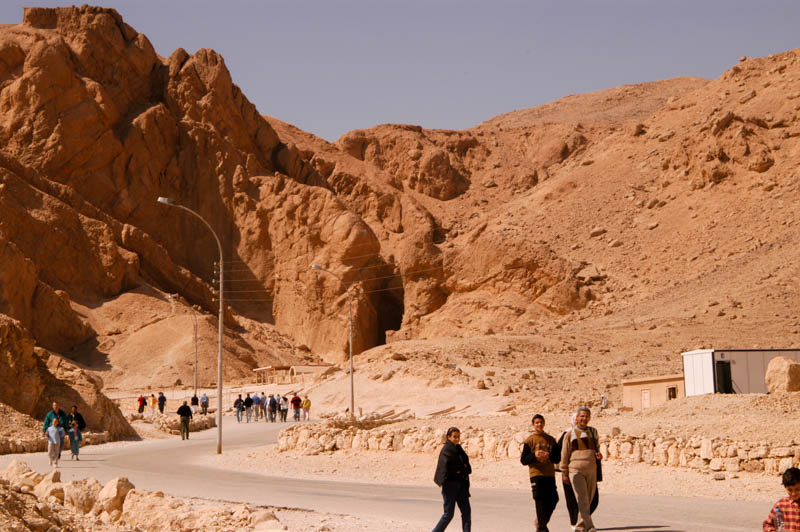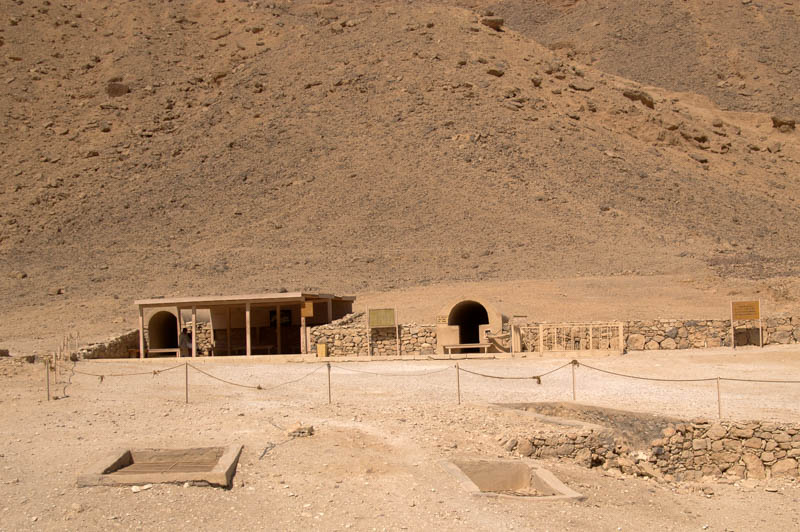The naming of the various valleys and wadis is a modern invention — the ancient Egyptians certainly didn’t call them by the names we do now. The names are a b ti misleading, too. The Valley of the Kings was the burial place for pharaohs and their queens and many of their children, too.

The Valley of the Queens has nearly 80 tombs, for queens and other wives, and many princes and other royal children. Many nobles and officials were buried here, long before the first queen was buried here.
The small valley here is known as Biban el-Harem, “Gates of the Harem”, although the original Egyptian name was “Place of Beauty”. The decorations here are often of higher quality than those of the tombs in the Valley of the Kings, but most of the tombs are plain and simple. The tomb of Queen Nefertari (primary wife of Ramesses II) is here — rightlfully considered one of the most fabulously decorated tombs in Egypt.
The tomb was closed when we visited, which was quite disappointing. It had been on our list of “must sees” for Egypt. Years of painstaking work cleaning adn repairing the plaster and paint revealed some of the best reliefs and murals in Luxor. Because the repaired reliefs are so fragile, only 150 people are allowed in per day — and for only ten minutes at a time. I really wish it had been open.
There are only four tombs open in the Valley of the Queens, and we honestly didn’t take many pictures since it was our first foray into tombs and we were a bit overwhelmed. Other than the elusive Tomb of Queen Nefertari, the valley contains the Tomb of Prince Khaemweset, Tomb of QUeen Titi, Tomb of Queen Sit-re, and Tomb of Amun-Hir-Khopshef.
Kaemwaset was a son of Ramesses III. He died of smallpox. Amun-Hir-Khopshef was his brother, and from his depiction in his tomb, he died as a young boy. His tomb is probably the most visited in the valley.
